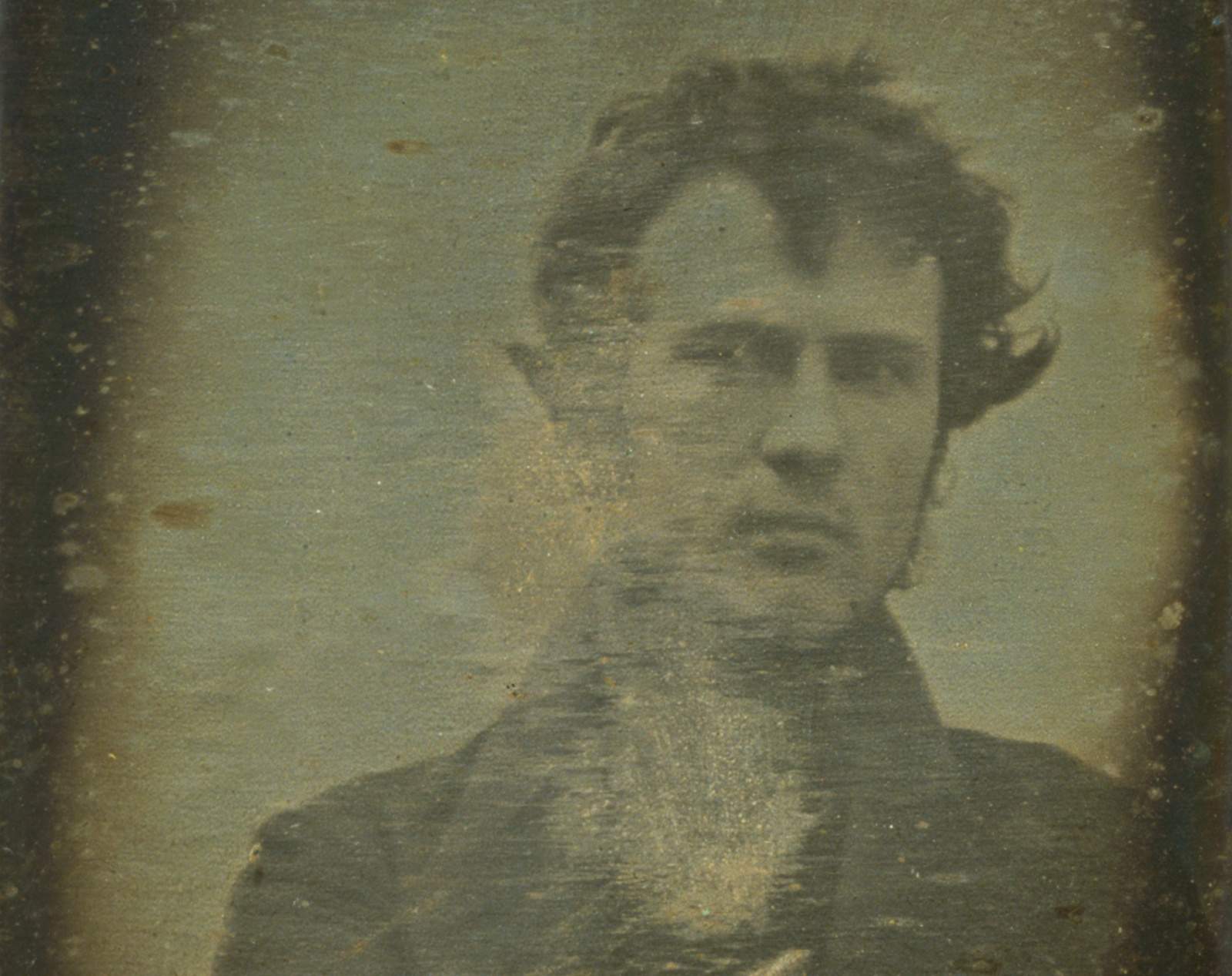There was no selfie stick, no hashtags and no sharing with his BFF. In fact, when Robert Cornelius took his historic selfie, he sat still as a stone for 15 minutes, then watched the photo slowly appear on a silver-plated sheet of copper as he breathed in dangerous mercury fumes.
 That was instant gratification in 1839.
That was instant gratification in 1839.
Cornelius, using a wooden box fitted with an opera glass, likely deserves credit for taking the world’s first selfie. He didn’t make the picture out of vanity, but as an experiment to test a silver-plating method for the daguerreotype photographic process, which had been introduced worldwide just three months before Cornelius’ self-portrait.
This post contains affiliate links. Cult of Mac may earn a commission when you use our links to buy items.
Each day, more than 1 million selfies are posted on Instagram. We take pictures with family and friends, document our presence at some amazing place, poke fun at a bad hair day or communicate the mood we’re in. It is a much-criticized symbol of our self-absorbed culture — and we can’t help ourselves.
The word “selfie” was only officially recognized two years ago. Yet people have been artfully composing self-portraits for more than a century. And in many cases, they took better selfies than you.
The history of art and photography are full of self-portraits. Here, we will consider some of the “firsts” in the selfie subgenre, as well as some truly quirky and extraordinary shots.
First-ever selfie
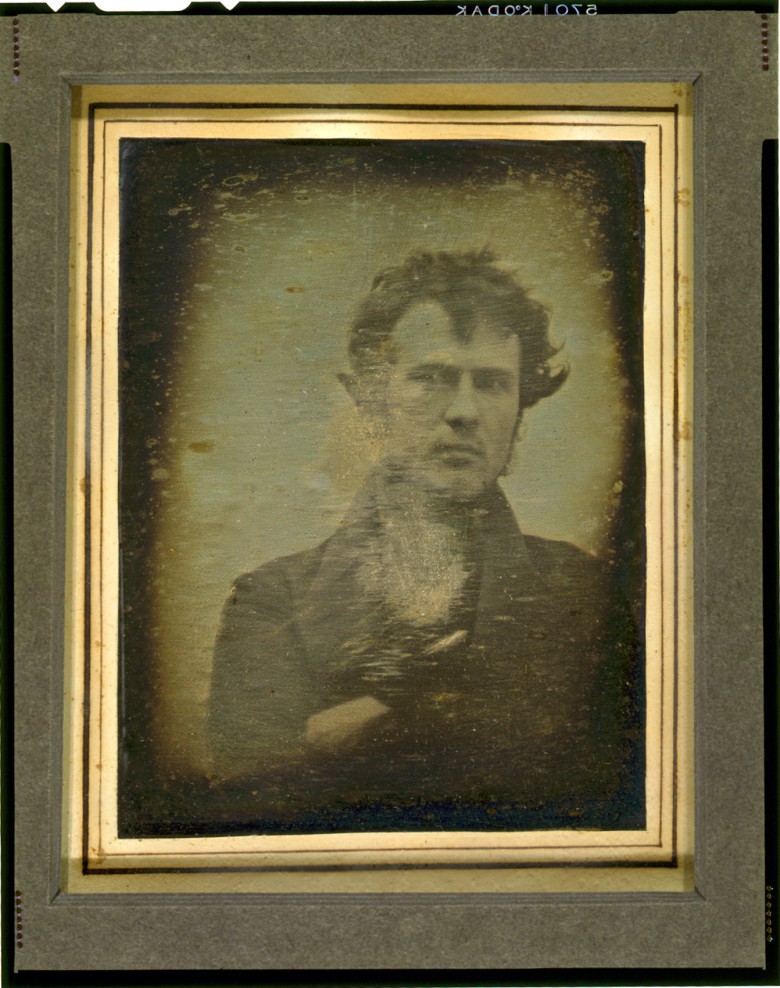
Photo: Library of Congress
Cornelius’ selfie now resides in the Library of Congress. To make the picture, he had to remove a cover from the lens, run in front of the camera and sit without moving for three to 15 minutes, according the Library of Congress file on the photo.
His hair was messy and he sat off-center. Once developed, the photo proved to critics that the daguerreotype process could be used in portraiture. The experience of seeing his image fixed to the plate inspired Cornelius to open his own photo studio. However, he closed shop just a couple years later and returned to work in the family lamp store.
First selfie from space
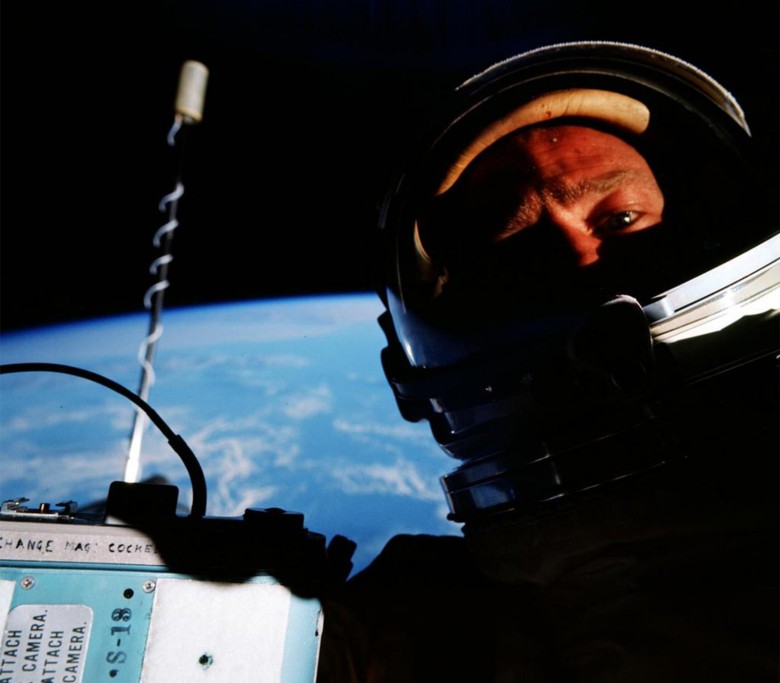
Photo: Buzz Aldrin/NASA
Buzz Aldrin made history as the second man to set foot on the moon, but he was also the first astronaut to take his own picture in space. With a hint of sunlight on his brave visage, Aldrin snapped a picture of himself while on a spacewalk outside his Gemini 12 capsule 1966.
He tweeted the picture last year, along with the words “best selfie ever.”
Mystery selfies
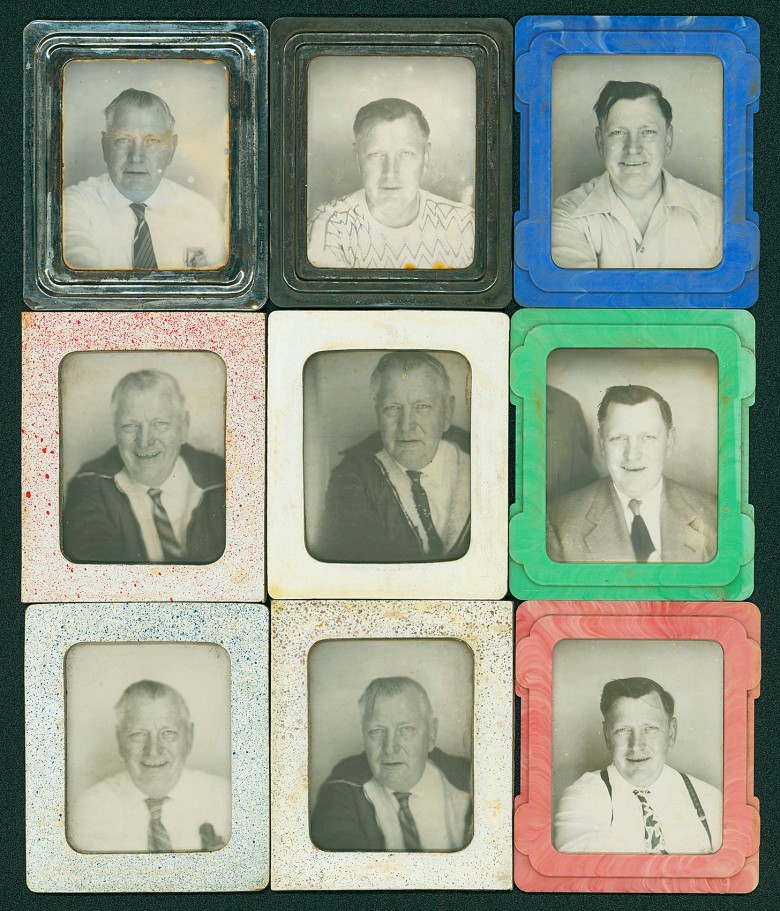
Photo: Collection of Donald Lokuta/ Rutger Zimmerili Art Museum
Nothing matches the spirit of today’s selfies quite like photo booth pictures. Even if you’ve never sat in a photo booth, activated its camera with quarters and made goofy expressions, you probably have some photo booth pictures of an older loved one.
One unknown man sat for pictures in photo booths several times over a 20-year period, and 445 of those black-and-white photos went on exhibit last year at Rutgers University. The owner of the collection can only speculate why one man took so many photos of himself, but one theory suggests he might have been a photo booth technician and the pictures represent each time he tested the machines.
The photos act as a timeline: The mystery man ages before our eyes. Sometimes he is dressed up, wearing a hat and smoking a pipe. He grins in some, stares blank-faced for others. The collection was bought a couple years back at a New York City antique show and is now displayed as art.
The pontiff and the president
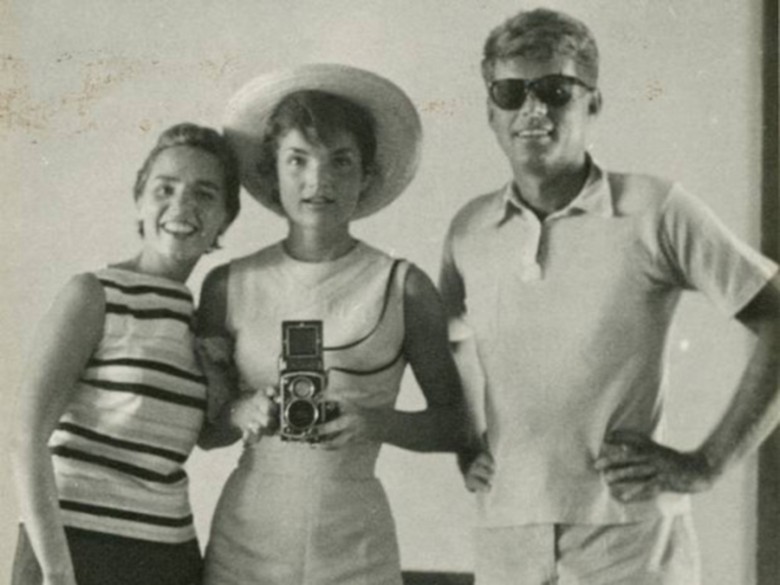
Photo: Michael Beschloss/Twitter
President Barack Obama is hep to the selfie. He poses for them, takes them himself and even stars in a commercial where he uses a selfie stick. While it is hard to say which president first pressed a shutter on themselves, this one of John F. Kennedy — as arranged by his photographer wife, Jackie — could contend as a history-maker (since we’re keeping score here).
The first self-pope-trait? Pope Francis continues to break new ground at the Vatican, and his willingness to pose for selfies with the faithful is just another testament to him being the peoples’ pope. John Paul II might have snapped a few as a youth in Poland, but Francis definitely knows the modern way of reaching an audience.
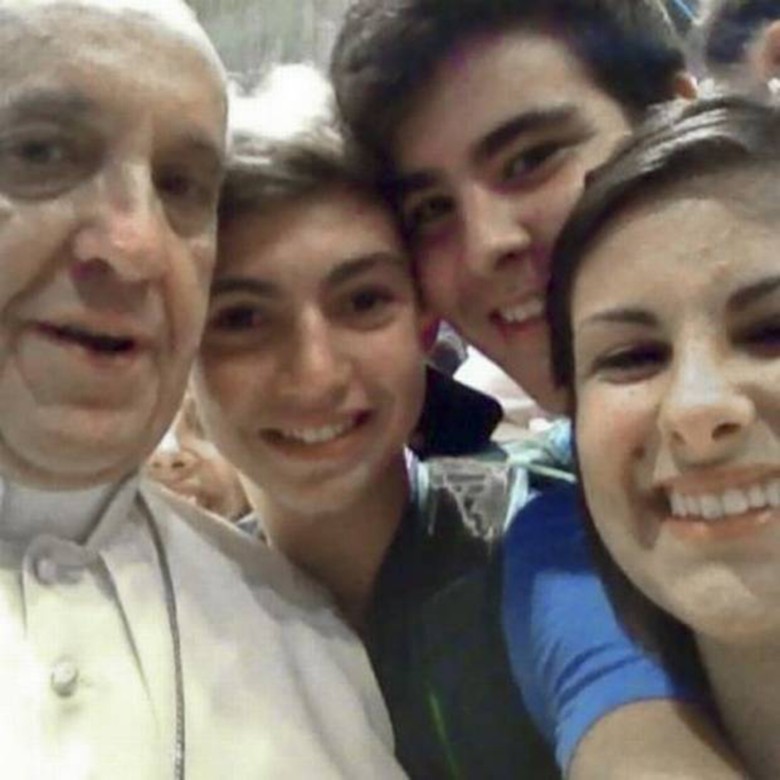
Photo: Facebook
So with his first scheduled trip to the United States as pope, will Francis and Obama come together for at least one selfie?
Selfies with celebrities
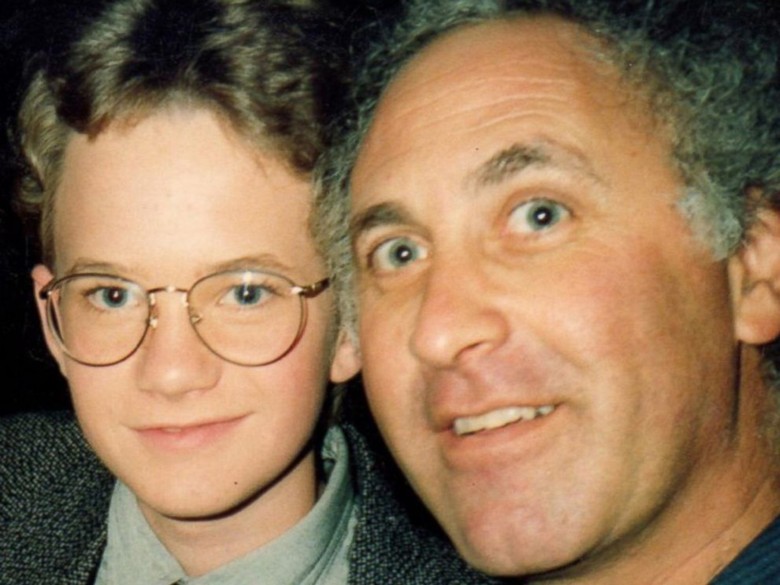
Photo: Lester Wisbrod
If a celebrity selfie is a measure of cool, then Lester Wisbrod is the king of cool.
A freelance videographer, Wisbrod found himself next to humorist Art Buchwald at an event in 1981. He asked Buchwald to pose, but rather than have someone else take the picture, Wisbrod pulled out a camera and snapped away. It was out of focus.
Since then, he has taken his own photos with celebrities more than 150 times. Now with an improved technique, he does not like taking his “Lesters” with an iPhone (he thinks it’s too hard to grip). He instead uses a Canon point-and-shoot camera.
The celebrities in his selfies range from Jennifer Anniston to Ronald Reagan, who told Wisbrod in 1990, “Gosh, I’ve never had my picture taken like that before.”
Post-mortem pose
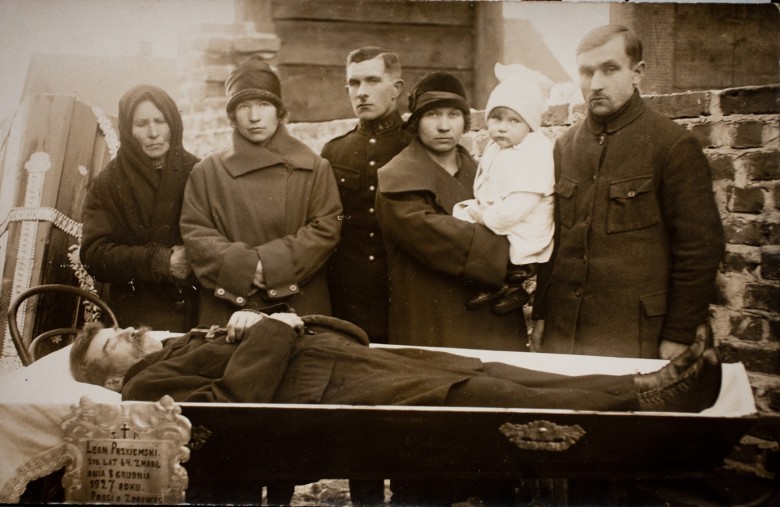
Photo: Museum of Mourning Photography and Memorial Practice
These days, when someone posts a selfie with a loved one laid out in a casket, an outcry can ensue on social media. The funeral selfie might be considered bad taste (more so if you post it on Instagram or Facebook), but in photography’s early years it was common for families to gather around the body for a photo. In most cases, these were the only pictures ever taken of that person.
I wanted to mention post-mortem photography, even though these are not technically self-portraits. But for those who might feel compelled to make a photo at a funeral, there’s some history on their side.
Two masters
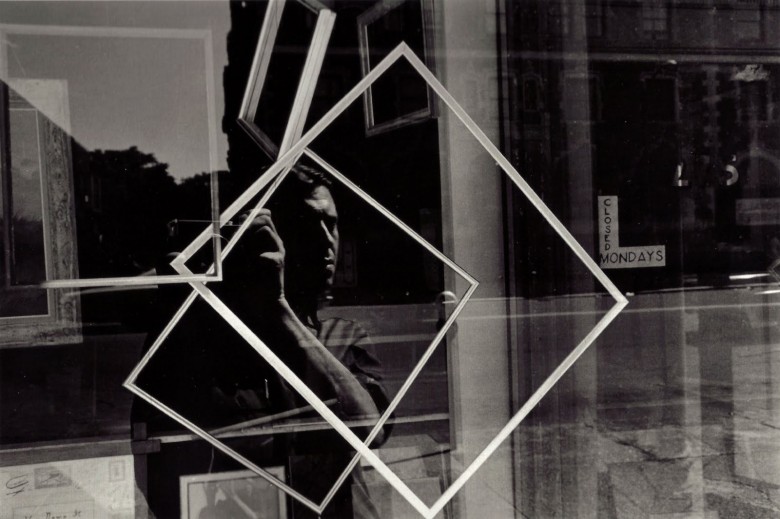
Photo: Lee Friedlander/Fraenkel Gallery
Virtually every photographer has turned the camera on themselves, but none with the results of street photographer Lee Friedlander. While wandering city streets, Freidlander would occasionally catch a glimpse of a shadow or reflection intersecting with his compositions.
A collection of his or for inspiration and reference, you can buy his book
“At first, my presence in my photos was fascinating and disturbing,” said Friedlander, who captured many thought-provoking selfies over the years. “But as time passed and I was more a part of other ideas in my photos, I was able to add a giggle to those feelings.” (You can see more of his photos in his book, Lee Friedlander: Self Portrait.)
Then there’s Vivian Maier, whose photography only recently became known to the world after hundreds of negatives where purchased at a storage unit auction in Chicago. Maier spent her life as a nanny, but always carried a camera on her day-off excursions. She made the kinds of pictures that have critics reshuffling the list of best street photographers.
A private person, few knew of Maier’s talents while she lived, but a glimpse of her heart and mind can be found in the many self-portraits she left behind. The two who bid on and won the contents of her storage units are now scanning the negatives and sharing her work with the world in exhibits, a documentary and books, including one called Vivian Maier: Self-Portraits.
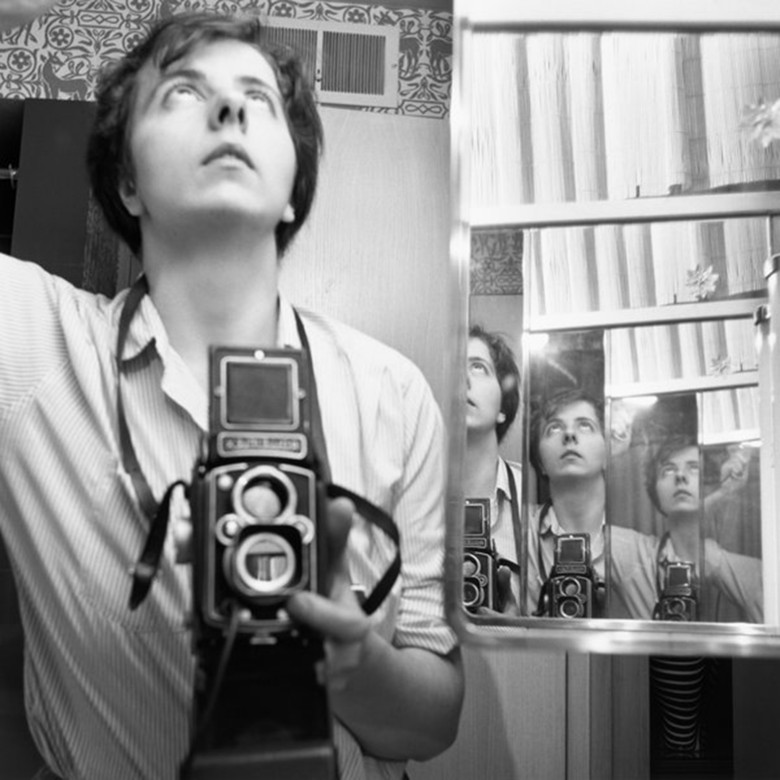
Photo: Vivian Maier/Maloof Collection
